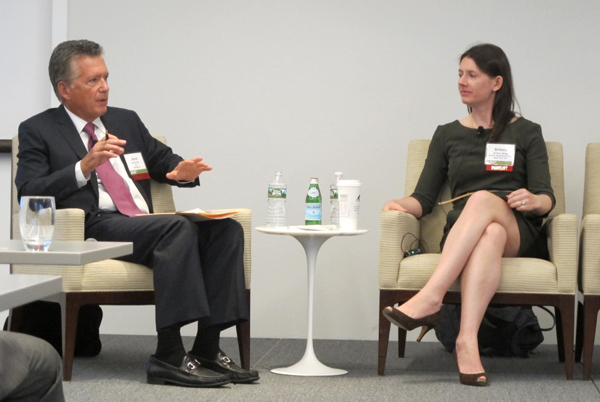Trending
Retail players defend market’s health but say major changes are coming
Crown Acquisitions, Hudson's Bay execs talk industry's future

Reports of retail’s death are greatly exaggerated, but major changes are still on their way to the industry, according to an Urban Land Institute panel Tuesday.
Brittany Bragg, COO of Crown Acquisitions, said certain assumptions about retail have come undone, such as the idea that properties will never be vacant. However, she maintained that the overall industry was not in dire straits, particularly in New York.
“New York City gets over 50 million tourists a year. We also have a few people who live and work here,” she said. “The fundamentals, just at a macro level, are still very, very strong.“
However, brick-and-mortar stores will still have to make significant changes if they want to thrive in an environment where online shopping seems to get easier and more convenient every day, according to Brian Pall of Hudson’s Bay Company who shared the stage with Bragg, Mary Rottler of Seritage Growth Properties, and moderator David Zoba of the Global Retail Leasing Board.
Stores will need to create unique experiences for their customers to make them actually look forward to leaving the confines of the internet, Pall said. While the current trend is to serve food, Pall does not think this will be enough.
“Better quality food, yeah, that’s a driver, and that will continue to [be a] driver, but that’s not the be-all [and] end-all,” he said. “You have to create something different, something special, something exciting in the store.”
Retailers are also trying to compete by being more open-minded about what to include around their stores, Rottler said. This can mean adding residential units and grocery stores to a sprawling mall complex or supporting businesses like gyms or entertainment centers that want to open next to a retail outlet.
“Ten years ago, they would have laughed at you: There’s no way. I need the parking and all of the other things that go with the assumptions of that hurts my business,” Rottler said, “and I think that has completely turned around.”
The future could also see a shift in the definition of an anchor tenant, according to Bragg. The point of such a tenant is to drive traffic, she said, so while the term has traditionally been limited to major retail stores, it could eventually expand to include residential units, subway stations and food halls going forward.
However, Bragg cautioned that she and fellow retail players were not clairvoyant, telling the audience that most people did not see the explosion of Starbucks coming in the ’90s, so they do not necessarily know what will happen 20 years from now, either.
“What we’re very good at,” she said, “is not predicting what will happen next.”
(To view retail leases in Manhattan from January to June 2016, click here. To view retail leases in Manhattan from January to June 2017, click here)




